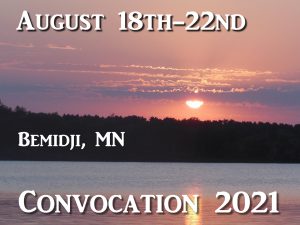The Jews who read Daniel as inspired prophecy would have understood that the temple that God commanded the returning exiles to rebuild (see Hag / Zech) was, from its beginning, a doomed edifice. As early as they had access to the book of Daniel, they could see that ‘at the time of the end’, the temple would again be surrendered over to destruction when a final aggressor (‘little horn’; Dan 7:8; 8:9) would defile the holy place and again tread down the holy city, as so read Jesus and His disciples (Mt 24:15-16; 2Thes 2:4; Rev 11:2).
Unlike many modern scholars, they saw this, not as a passing episode that did NOT realize the final deliverance of Daniel’s people (e.g., the Syrian occupation of 166-163 B.C), but as necessarily bringing in the more ultimate end of the age, even the resurrection of the righteous (Dan 12:1-2). From this, they would know that the temple would be standing for many generations, and regardless of the interruption that happened briefly in the second century B.C. under the Syrian tyrant, Antiochus IV, many understood, as Jesus would predict, that the temple would certainly be standing when the final desecration would be accomplished, just 3.5 years before the end.
It becomes very noteworthy then that the temple of Isa 63:18; 64:10-11 (which notably echoes the language of Ps 74), is described as being in Jewish possession for only “a little while” when the final desolation comes (Isa 63:18; 64:10-11). The context is clearly the end of exile. This is very significant, and a very crucial point in our apologetic, because it goes perfectly to explain why nothing in history has sufficiently answered to the 2300 days of Dan 8:9-14.
The difference between the half week described in Dan 7:25; 9:27; 12:7, 11, and the longer period of Dan 8:14 is the difference in the starting point of the sacrifice. This is clear, since both periods include the desolating sacrilege that starts the tribulation that arrives at the same end, notably an ‘end’ that Daniel ties, not only to Israel’s long awaited deliverance but also to the resurrection of the righteous (Dan 12:1-2).
The logic is this: if the 2300 days of Dan 8:13-14 has not been fulfilled in antiquity (as no proffered account of the chronology, either of the Syrian desecration or the Roman siege, answers nearly enough to the specificity of the time), and if the days are not arbitrarily converted into years, as in the historicist school and Adventism, and, since the end in view is nothing short of the eschatological climax of Israel’s permanent and everlasting deliverance in conclusion of the times of the gentiles, then it seems only one conclusion can follow. The 2300 days marks the time from which the sacrifice begins.
Since the sacrifice is stopped in the middle of the week to begin the last 3.5 years of unequaled tribulation, when did it start? At the time of the Roman destruction of the temple of 67-70 A.D., the sacrifice had been uninterrupted since it was taken away for the space of exactly 3 years by Antiochus IV, from Dec 25 166 to Dec 25 163 B.C. The sacrifice was once more suspended for only a day at the end of Pompeii’s three month siege of Jerusalem in 63 B.C. After that, it continued uninterrupted until the Roman siege of 67 A.D. Since then, the Jews have been without a temple and sacrifice (‘many days’; Hos 3:4-5).
If the temple that is desecrated to begin the last tribulation is one that has been in Jewish possession for only ‘a little while’, and if the 2300 day prophecy of Dan 8:13-14 is speaking of a sacrifice that has only recently started when it is stopped, then it becomes clear that the prophecy of Daniel could not, under any regard for the details of the prophecy, have been fulfilled while the second temple was standing. This means that the sacrifice that is taken away in the middle of the week (Dan 9:27; 12:11) cannot be confused with the sacrifice that continued in the second temple until it was stopped by the 70 A.D. destruction of the Romans. It could only belong to a future temple that hosts a sacrifice that has only recently started, because the temple itself has only recently been rebuilt, according to Isa 63:18.
Therefore, if we can say that the 2300 terminates at the point of the 1290th day of Dan 12:11, then, by counting backwards, we arrive at the approximate time the sacrifice will start again. I say approximate, because it is only an inference to assume that the sanctuary is cleansed exactly on the 1290th day after the stopping of the sacrifice. Though possible, it is not clearly stated.
If we allow the example of Hanukkah to inform the meaning of the cleansing of the sanctuary, then this may take place sometime later than the 1290, perhaps further out, somewhere within the 1335 days. Obviously, this takes us past the Lord’s return into the early days of the millennium when a new temple will be dedicated on the topographically transformed table land of Zech 14:9-11; as “the mountain of the Lord’s house will be established in the tops of the mountains, and shall be exalted above the hills; and all nations shall flow unto it” (Isa 2:2).
So while precise exactitude may not be advisable, it is enough to understand that within the first year after the covenant has been confirmed, the sacrifice starts only to be stopped soon afterward in the middle of the seven.
This becomes very significant in distinguishing the peace arrangement that will coincide with the beginning of the last seven years. The “league” or covenant that we are looking for must be one that brings about some very distinctive and unmistakable conditions that must align at the same time. Regardless of what other events fall impressively into place, the last seven years of this age cannot begin until some form of agreement provides for conditions that permit, not only Jewish access to the temple mount, but the consecration of the holy place in a new temple and the soon starting again of the daily sacrifice.
Any peace plan that does not confirm (ratify / strengthen) a covenant that recognizes Jewish right to their ancient place of worship CANNOT be the last week / seven of Dan 9:27, because very shortly after the last week starts with the confirming of the covenant, the sacrifice is very soon to start. Could the covenant that is confirmed in Dan 9:27 be the same covenant that is called ‘the holy covenant’ in Dan 11:28, 30?
So regardless of who the Antichrist is thought to be, or from whence he is expected to originate, and regardless of what other identifying actions he is to fulfill within the first half of the seven (Dan 11:23-30), one thing is very clear. If it is the covenant of Dan 9:27, it will be followed by the deceptive peace described in Isa 28:15, 18; Dan 8:25; 9:27; 11:23-24; Thes 5:3. But no peace can decisively confirm that seven years has begun UNLESS it provides for the soon resumption of the daily sacrifice in a temple that has been only recently recovered to Jewish possession.
THAT is the verification that the believer must require. When these unmistakable events come into manifest alignment, there can be no doubt that the last seven years has begun. Of all the questions of prophecy regarding the time (when it will be time to know the time), a peace initiative that will at last provide for the real beginnings of a temple is the only kind of peace initiative that should command our attention as promising a soon beginning of the last seven years. Until the question of a Jewish temple is seriously on the table, peace negotiations are not, by themselves, decisive evidence that the seven years is at hand.
God has given this knowledge to His people for a gracious advantage in many regards, but Jesus particularly specifies its use in our defense against the unparalleled deception that is coming on the whole earth. His prescribed antidote is that we “take heed” to what He has told us before (Mt 24:25; ‘all things’; Mk 13:23), and that we follow His command to read and understand Daniel’s reference to the abomination of desolation in particular (Mt 24:15; Dan 8:11; 9:27; 11:31; 12:11).
By so doing, we not only prepare ourselves against the great deception, we also equip others to equip others (2Tim 2:15) in those days when so many will be in distress and confusion at the overwhelming events that only the light of prophecy can interpret (Dan 11:32-33; 12:3). Jesus knew that by obedience to His command to read and understand this event in particular that a whole vista would open up, not only of what is to follow the abomination, but of all that leads up to it.
Knowing the events that mark the first half of the week will be crucial for our preparation for the unprecedented test that follows the abomination of desolation. This knowledge and the certainty concerning the time is a great gift that designs the deepest work of the Spirit in the world wide body of Christ, unprecedented since Pentecost.




